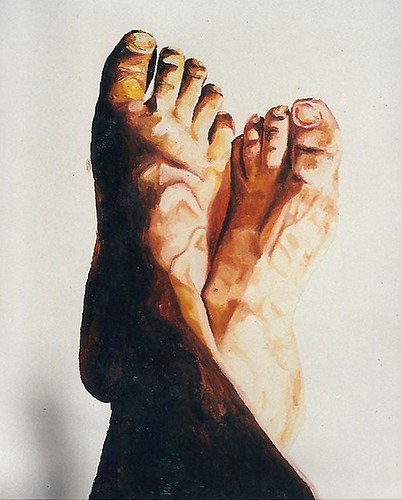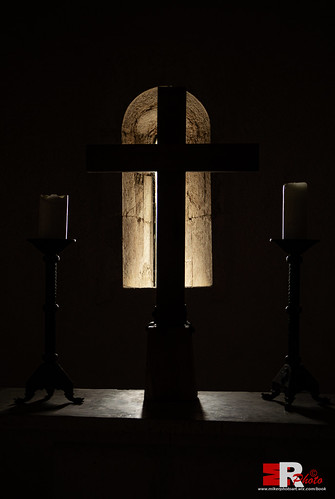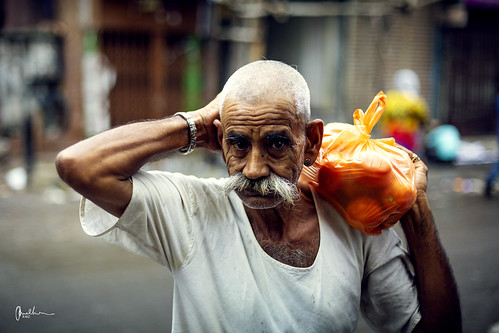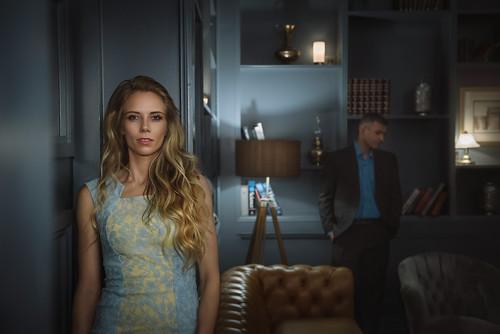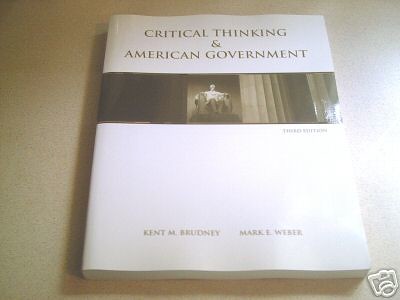
Pride and Prejudice: on Raphael Perez’s Artwork
Raphael Perez, born in 1965, studied art at the College of Visual Arts in Beer Sheva, and from 1995 has been living and working in his studio in Tel Aviv. Today Perez plays an important role in actively promoting the LGBT (lesbian, gay, bisexual and transsexual) art and culture in Tel Aviv, and the internet portal he set up helps artists from the community reach large audiences in Israel and abroad. Hundreds of his artworks are part of private collections in Israel and abroad, and his artworks were shown in several group exhibitions: in Tel Aviv Museum of Art, "Zman Le’Omanut" art gallery, Camera Obscura, The Open House in Jerusalem, Ophir Gallery, The Haifa Forum and other private businesses and galleries.
In 2003-4 his paintings and studio appeared in a full-length movie, three student films and two graduation films.
Raphael Perez is the first Israeli artist to express his lifestyle as a Gay. His life and the life of the LGBT community are connected and unfold over hundreds of artwork pieces. His art creation is rare and extraordinary by every Israeli and international artistic standard. His sources of inspiration are first and foremost life events intertwined in Jewish and Israeli locality as well as influences and quotes from art history (David Hockney, Matisse). This uniqueness has crossed international borders and has succeeded in moving the LGBT and art communities around the world.
This is the first time we meet an Israeli artist who expresses all of his emotions in a previously unknown strength. The subjects of the paintings are the everyday life of couples in everyday places and situations, along with the aspiration to a homosexual relationship and family, equality and public recognition. Perez’s works bring forward to the cultural space and to the public discourse the truth about living as LGBT and about relationships, with all of their aspects – casual relationships and sex, the yearning for love, the everyday life and the mundane activities that exist in every romantic relationship – whether by describing two men in an intimate scene in the bathroom, the bedroom or the toilet, a male couple raising a baby or the homosexual version of the Garden of Eden, family dinners, relationship ups and downs, the complexity in sharing a life as well as mundane, everyday life competing with the aspiration to self realization – through Perez’s life.
Perez’s first artworks are personal diaries, which he creates at 14 years of age. He makes sure to hide these diaries, as in them he keeps a personal journal describing his life events in the most genuine way. In these journals he draws thousands of drawings and sketches, next to which he alternately writes and erases his so-called "problematic texts", texts describing his struggle with his sexual orientation. His diaries are filled with obsessive cataloging of details, daily actions, friends and work, as well as repeating themes, such as thoughts, exhibits he has seen, movies, television, books and review of his work.
When he is done writing, Perez draws on his diaries. Each layer is done from beginning to end all along the journal. In fact, the work on the diaries never ends.
This struggle never ends, and when the emotion is passed on to paper, and it ends its role and becomes meaningless in a way, the visual-graphic side becomes dominant, due to the need to hide the written text, according to Perez. In books and diaries this stands out even more – when he chooses to draw in a style influenced by children’s drawings, the characters are cheerful, happy, naïve and do not portray any sexuality, and when he tries drawing as an adult the sketches became more depressed and somber. During these years Perez works with preschool children, teaching them drawing and movement games. Perez says that during this period he completely abandoned the search for a relationship, either with a woman or a man, and working with children has given him existential meaning. This creation continues over 10 years, and Perez creates about 60 books-personal journals in various sizes (notepads, old notebooks, atlases and even old art books).
In his early paintings (1998-1999) the transition from relationships with women to relationships with men can be seen, from restraint to emotional outburst in color, lines and composition. Some characters display strong emotional expression. The women are usually drawn in restraint and passiveness, while a happy and loving emotional outburst is expressed in the colors and style of the male paintings.
"I fantasized that in a relationship with a woman I could fly in the sky, love, fly. However, I felt I was hiding something; I was choked up, hidden behind a mask, as if there was an internal scream wanting to come out. I was frustrated, I felt threatened…"
His first romance with a man in 1999 has drawn out a series of naïve paintings dealing with love and the excitement of performing everyday actions together in the intimate domestic environment.
"The excitement from each everyday experience of doing things together and the togetherness was great, so I painted every possible thing I liked doing with him."
From the moment the self-oppression and repression stopped, Perez started the process of healing, which was expressed in a burst of artworks, enormous in their size, amount, content and vivid colors – red, pink and white.
In 2000 Perez starts painting the huge artworks describing the hangouts of the LGBT community (The Lake, The Pool) and the Tel Avivian balcony paintings describing the masculine world, which, according to him, becomes existent thanks to the painting. Perez has dedicated this year to many series of drawings and paintings of the experience of love, in which he describes his first love for his new partner, and during these months he paints from morning to night. These paintings are the fruit of a long dialogue with David Hockney, and the similarity can be seen both in subjects and in different gestures.
In 2001 Perez creates a series of artworks, "Portraits from The Community". Perez describes in large, photorealistic paintings over 20 portraits of active and well-known members of the LGBT community. The emphasis is on the achievements that reflect the community’s strong standing in Tel Aviv.
As a Tel-Avivian painter, in the past two years Perez has been painting urban landscapes of central locations in his city. Perez wanders around the city and chooses familiar architectural and geographical landmarks, commerce and recreation, and historical sites, and paints them from a homosexual point of view, decorated with the rainbow flag, which provide a sense of belonging to the place. His artworks are characterized by a cheerful joie de vivre and colors, and they also describe encounters and meetings. The touristic nature of his paintings makes them a declaration of Tel Aviv’s image as a place where cultural freedom prevails.
Perez’s Tel Aviv is a city where young families and couples live and fill the streets, the parks, the beach, the houses and the balconies – all the city’s spaces. The characters in his paintings are similar, which helps reinforcing the belonging to the LGBT community in Tel Aviv. The collective theme in Perez’s artwork interacts with the work of the Israeli artist Yohanan Simon, who dealt with the social aspects of the Kibbutz. Simon, who lived and worked in a Kibbutz, expressed the human model of the Kibbutznik (member of a Kibbutz) and the uniqueness of the Kibbutz members as part of a group where all are equal. Simon’s works, and now Perez’s, have contributed to the Israeli society what is has been looking for endlessly, which is a sense of identity and belonging.
Perez maps his territory and marks his boundaries, and does not forget the historical sites. Unlike other Tel Avivian artists, Perez wishes to present the lives of the residents of the city and the great love in their hearts. By choosing the historical sites in Tel Aviv, he also pays tribute to the artist Nachum Gutman, who loved the city and lived in it his whole life. In his childhood Gutman experienced historical moments (lighting the first oil lamp, first concert, first pavement), and as an adult he recreated the uniqueness of those events while keeping the city’s magic.
Like Gutman, Perez has also turned the city into an object of love, and it has started adorning itself in rich colors and supplying the energy of a city that wishes to be "the city that never sleeps", combining old and new. Perez meticulously describes the uniqueness and style of the Bauhaus houses and balconies along the modern glass and steel buildings, all from unusual angles in a rectangular format that wishes to imitate the panorama of a diverse city in its centennial celebrations.
Daniel Cahana-Levensohn, curator.
Interview with the painter Raphael Perez about his family artist book
An interview with the painter Raphael Perez about an artist’s book he created about his family, the Peretz family from 6 Nissan St. Kiryat Yuval Jerusalem
Question: Raphael Perez, tell me about the family artist book you created
Answer: I created close to 40 artist books, notebooks, diaries, sketch books and huge books. I dedicated one of the books to my dear family, a book in which I took a childhood photograph of my family, my parents and brothers and sisters.. I pasted the photographs inside a book (the photograph is 10 percent of the total painting) and I drew with acrylic paints, markers and ink on the book and the photograph, so that the image of the photograph was an inspiration to me Build the story that includes page by page..
Question: Tell me when you were born, where, and a little about your family
Answer: I was born on March 4, 1965 in the Kiryat Yuval neighborhood in Jerusalem
I have a twin brother named Miki Peretz and we are seven brothers and sisters, five boys and two girls
Question: Tell us a little about your parents
Answer: My parents were new immigrants from Morocco, both immigrated young.
My mother’s name before the wedding was Alice – Aliza ben Yair and my father’s name was Shimon Peretz,
My mother was born in the Atlas Mountains and was orphaned at a young age and was later adopted by my father’s family at the age of 10, so that my mother and father spent childhood and adolescence together….
They had a beautiful and happy relationship but sometimes when they argued my mother would say "even when she was a child she was like that…" This means that their acquaintance and relationship dates back to childhood..
Question: What did your parents Shimon and Aliza Peretz work for?
Answer: My father, Shimon Perez, born in 1928 – worked in a building in his youth and then for thirty years worked as a receptionist at Hadassah Ein Kerem Hospital in Jerusalem… My father’s great love was actually art, he loved to draw as a hobby, write, read, solve crossword puzzles and research Regarding the issue of medicinal plants, as a breadwinner he could not fulfill his dream of becoming an artist, in order to support and feed seven children. But we are the next generation, his children are engaged in the world of creativity and education, a field in which both of my parents were engaged during their lives. My father died at the age of 69
My mother, Alice Aliza Perez, born in 1934, worked as an assistant to a kindergarten teacher, and later took care of a baby at home. She is a woman of wholehearted giving and caring for children and people, a warm, generous and humble woman.. and took care of us in our childhood for every emotional and physical deficiency.. My mother is right For the year 2023, the 89-year-old is partly happy and happy despite the difficulties of age.. May you have a long life..
My mother really loved gardening and nature and both of them together created a magnificent garden, my parents have a relatively large garden so they could grow many types of special and rare medicinal plants and my father even wrote a catalog (unpublished) of medicinal plants and we even had botany students come to us who were interested in the field… today they They also grow ornamental plants, and fruit trees…
Question: A book about the brothers and sisters
Answer: My elder brother David Perez repented in his mid-twenties.. He was a very sharp, opinionated, curious and very charismatic guy who brought many people back to repentance, and also helped people with problems through the yeshiva and the synagogue to return to the normal path of life, he died young at the age of 56
Hana Peretz: My lovely sister, raised eight children, worked in the field of education, a kindergarten teacher, and child care.
She has a very large extended family of grandchildren, great-grandchildren and great-great-grandchildren…
My brother Avi (Abraham) Peretz studied in Israel at the University of Philosophy and Judaism, he married a wonderful woman named Mira Drumi, a nurse by profession, and together they had three wonderful children, when they moved to the United States in their mid-twenties, where my brother Avi Peretz completed his master’s degree in education, worked in the field Education and for the last twenty years is A conservative rabbi
The fourth brother is Asher Peretz – a great man of the world, very fond of traveling and has been to magical places all over the world, engaged in the creation of jewelry with two children.
I am Rafi Peretz english raphael perez the fifth and after fifteen minutes my twin brother was born
My mother still gets confused and can’t remember who was born first 🙂
My twin brother Miki micky – Michael Peretz, a beloved brother (everyone is beloved), a talented industrial designer, he has three children, his wife Revital Peretz Ben, who is a well-known art curator, active and responsible for the art field in Tel Aviv, they are a dynamic and talented couple, full of talents and action
The lovely little sister Shlomit Peretz – has been involved in the Bezeq telephone company for almost three decades, and is there in management positions, raising her lovely and beloved child.
The art book I dedicated to my family is colorful, rich in details, shows a very intense childhood, happy, cheerful, colorful, … We were taught to be diligent and to be happy in our part and to see the glass half full in life, to have emotional intelligence and to put the relationship and love at the center with self-fulfillment in work that will interest you us and you will give us satisfaction.
Each of us is different in our life decisions and my family is actually a mosaic of the State of Israel that includes both religious and secular people from the entire political spectrum who understand that the secret to unity is mutual respect for each other… when my mother these days is also the family glue in everyone’s gatherings on Shabbat and holidays..
The personification of the flower couple paintings by the Israeli painter Raphael Perez
Raphael Perez, also known as Rafi Peretz, is an Israeli painter who
explores his personal and sexual identity through his flower paintings. He created a series of flower paintings from 1995 to 1998, when he was in his early thirties and still in relationships with women, despite feeling gay. His flower paintings reflect his emotional turmoil and his struggle with his sexual orientation. He painted two flowers, one blooming and one wilting, to represent the contrast and conflict between his heterosexual relationships and his true self. He also painted single flowers or two flowers in their prime, to express his longing for a harmonious relationship that matches his nature. He chose sunflowers, white lilies, and red lilies as symbols of expression, purity, and joy, respectively. He painted from real flowers, using different styles and light to create drama and mood. Perez’s paintings of the flower couples are minimalist and focused on the theme of the complex relationship. He omitted any background or context, leaving only the canvas and the drawing of the flower couples. In some of the paintings, he added a very airy abstract surface with thin oil paints that give an atmosphere of watercolors. He also made drawings of flowers in ink, markers and gouache on paper. Later on, he created large acrylic paintings of flowers and still life. Perez’s flower paintings are not mere illustrations or decorations. They are autobiographical and psychological expressions of his inner state and his struggle with his sexuality. He wanted to reveal his loneliness, distress and concealment through these paintings, and to connect with people who are in a similar situation. He deliberately chose only two flowers and no more to intensify the engagement in the charged and complex relationship. Perez also painted and drew couples of men and women with charged psychological states, as well as states of desire for connection and realization of a heterosexual relationship that did not succeed. He used hyperrealism and expressive styles to convey his frozen and calculated state, as well as his mental stress. He used harsh lighting to create contrast and drama, with one side very bright and the other side darker. Perez was influenced by some of the famous artists who painted flowers, such as Van Gogh, who also used sunflowers as a symbol of expression. He also used white lilies and red lilies to convey freshness, cleanliness, purity, color, joy, movement, eruption, and splendor. Perez also painted some single flowers or two flowers in their prime, to show his aspiration for a future where he will have a harmonious relationship. Today, he is 58 years old and in a happy relationship for 10 years with his partner Assaf Henigsberg. He is surrounded by female friends and soulmates and not conflicted with heterosexual relationships as he used to be. He occasionally paints flowers in pots to symbolize home, stability, and peace. Sometimes I paint flowers in pots, which represent home, stability, and solid ground for me. I don’t paint just a couple of flowers, but pots full of flowers that overflow with life. This means that we also have a supportive network of family, friends, and peers around us. We live in a rich, supportive, and protective world. These paintings are a personification of my psychological state, when I had no words to express my feelings to myself. The painting began In 35 years of my creation (starting in 1998), you can read more about how my art and style evolved over time. Perez’s flower paintings are a unique and extraordinary artistic creation that reveals his personal journey and his sexual identity. His work is honest, expressive, and emotional, as well as beautiful and vibrant.
The characteristics of the naive painting of the painter Raphael Perez
A full interview with the Israeli painter Raphael Perez (Hebrew name: Rafi Peretz) about the ideas behind the naive painting, resume, personal biography and curriculum vitae Question: Raphael Perez Tell us about your work process as a naive painter? Answer: I choose the most iconic and famous buildings in every city and town that are architecturally interesting and have a special shape and place the iconic buildings on boulevards full of trees, bushes, vegetation, flowers. Question: How do you give depth in your naive paintings? Answer: To give depth to the painting, I build the painting with layers of vegetation, after those low famous buildings, followed by a tall avenue of trees, and behind them towers and skyscrapers, in the sky I sometimes put innocent signs of balloons, kites. A recurring motif in some of my paintings is the figure of the painter who is in the center of the boulevard and paints the entire scene unfolding in front of him, also there are two kindergarten teachers who are walking with the kindergarten children with the state flags that I paint, and loving couples hugging and kissing and family paintings of mother, father and child walking in harmony on the boulevard. Question: Raphael Perez, what characterizes your naive painting? Answer: Most naive paintings have the same characteristics (Definition as it appears in Wikipedia) • Tells a simple story to absorb from everyday life, usually with humans. • The representation of the painter’s idealization to reality – the mapping of reality. • Failure to maintain perspective – especially details even in distant details. • Extensive use of repeating patterns – many details. • Warm and bright colors. • Sometimes the emphasis is on outlines. • Most of the characters are flat, lack volume • No interest in texture, expression, correct proportions • No interest in anatomy. • There is not much use of light and shade, the colors create a three-dimensional effect. I find these definitions to be valid for all my naive paintings Question: Raphael Perez, why do you choose the city of Tel Aviv? Answer: I was born in Jerusalem, the capital city which I love very much and also paint, I love the special Bauhaus buildings in Tel Aviv, the ornamental buildings that were built a century ago in the 1920s and 1930s, the beautiful boulevards, towers and modern skyscrapers give you the feeling of the hustle and bustle of a large metropolis and there are quite a few low and tall buildings that are architecturally fascinating in their form the special one Also, the move to Tel Aviv, which is the capital of culture, freedom, and secularism, allowed me to live my life as I chose, to live in a relationship with a man, Jerusalem, which is a traditional city, it is more complicated to live a homosexual life, also, the art world takes place mainly in the city of Tel Aviv, and it is possible that from a professional point of view, this allows I can support myself better in Tel Aviv than in any other city in Israel. Question: Raphael Perez, are the paintings of the city of Tel Aviv different from the paintings of the city of Jerusalem? Answer: Most of the paintings of Jerusalem have an emphasis on the color yellow, gold, the color of the old city walls, the subjects I painted in Jerusalem are mainly a type of idealization of a peaceful life between Jews and Arabs and paintings that deal with the Jewish religious world, a number of paintings depict all shades of the currents of Judaism today In contrast, the Tel Aviv paintings are more colorful, with skyscrapers, the sea, balloons and more secular motifs Question: Raphael Perez, tell me about which buildings and their architects you usually choose in your drawings of cities Answer: My favorite buildings are those that have a special shape that anyone can recognize and are the symbols of the city and you will give several examples: In the city of Tel Aviv, my favorite buildings are: the opera building with its unusual geometric shape, the Yisrotel tower with its special head, the Hail Bo Shalom tower that for years was the symbol of the tallest building in Tel Aviv, the Levin house that looks like a Japanese pagoda, the burgundy-colored Nordeau hotel with the special dome at the end of the building, A pair of Alon towers with the special structure of the sea, Bauhaus buildings typical of Tel Aviv with the special balconies and the special staircase, the Yaakov Agam fountain in Dizengoff square appears in a large part of the paintings, many towers that are in the stock exchange complex, the Aviv towers and other tall buildings on Ayalon, in some of the paintings I took plans An outline of future buildings that need to be built in the city and I drew them even before they were built in reality, In the paintings of Jerusalem, I mainly chose the area of the Old City and East Jerusalem, a painting of the walls of the Old City, the Western Wall, the Church of the Holy Sepulcher, the El Akchea Mosque, the Tower of David, most of the famous churches in the city, the right hand of Moses, in most of the paintings the Jew is wearing a blue shirt with a red male cord I was in the youth movement and the Arab with a galabia, and in the paintings of the religious public then, Jews with black suits and white shirts, tallitas, kippahs, special hats, synagogues and more I also created three paintings of the city of Haifa and one painting of Safed In the Haifa paintings I drew the university, the Technion, the famous Egged Tower, the Sail Tower, well-known hotels, of course the Baha’i Gardens and the Baha’i Temple, Haifa Port and the boats and other famous buildings in the city Question: Raphael Perez, have you created series of other cities from around the world? Answer: I created series of New York City with all the iconic and famous buildings such as: the Guggenheim Museum, the famous skyscrapers – the Chrysler Building, the Empire State Building, Lincoln Center, the famous synagogue in the city, the Statue of Liberty, the flags of the United States and other famous buildings Two paintings of London and all its famous sites, Big Ben, famous monuments, the Ferris wheel, Queen Elizabeth and her family, the double bus, the famous public telephone, palaces, famous churches, well-known monuments I created 4 naive paintings of cities in China, a painting of Shanghai, two paintings of the city of Suzhou and a painting of the World Park in the city of Beijing… I chose the famous skyline of Shanghai with all the famous towers, the famous promenade, temples and old buildings, two Paintings of the city of Suzhou with the famous canals, bridges, special gardens, towers and skyscrapers of the city Question: Raphael Perez What is the general idea that accompanies your paintings Answer: To create a good, beautiful, naive, innocent world in which we will see the innovation of the modern city through the skyscrapers in front of small and low buildings that bring the history and past of each country, all with an abundance of vegetation, boulevards, trees Resume, biography, CV of the painter Rafi Peretz and his family Question: When was Raphael Perez born in hebrew his name rafi peretz? Answer: Raphael Perez in Hebrew his name Rafi Peretz was born on March 4, 1965 Question: Where was Raphael Perez born? Answer: Raphael Perez was born in Jerusalem, Israel Question: What is the full name of Raphael Perez? Answer: His full name is Raphael Perez Question: Which art institution did Raphael Perez graduate from? Answer: Raphael Perez graduated from the Visual Arts Center in Be’er Sheva Question: When did Raphael Perez start painting? Answer: Raphael Perez started painting in 1989 Question: When did you start making a living selling art? Answer: Raphael Perez started making a living selling art in 1999 Question: Where does Raphael Perez live and work? Answer: Since 1995, Raphael Perez has been living and working from his studio in Tel Aviv Question: In which military framework did Raphael Perez serve in the IDF? Answer: Raphael Perez served in the artillery corps Question: Raphael Perez, what jobs did he work after his military service? Answer: Raphael Perez worked for 15 years in education in therapeutic settings for children and taught arts and movement Question: How many brothers and sisters does Raphael Perez, the Israeli painter, have? Answer: There are seven children in total, with the painter 5 sons and two daughters, that means the painter Raphael Perez has 4 more brothers and two sisters Question: What do the brothers and sisters of the painter Raphael Perez do? Answer: The elder brother David Peretz Perez was involved in the field of religious studies, the sister Hana Peretz Perez is involved in the field of education, a kindergarten teacher and child care, the brother Avi Peretz Perez who is in the United States today is a conservative rabbi but in the past was involved in education and therapy, the brother Asher Peretz Perez is involved in the fields of creativity and jewelry The twin brother Mickey Peretz Perez is a well-known industrial designer and seller. The younger sister Shlomit Peretz Perez works in a managerial position at Bezeq. Question: Tell me about the parents of the painter Raphael PerezAnswer: The painter Raphael Perez’s parents are Shimon Perez Peretz and Eliza Alice Ben Yair, they were married in 1950 in Jerusalem, both were born in Morocco and immigrated to Israel in 1949, Shimon Peretz worked in a building in his youth and later as a receptionist at the Hadassah Ein Kerem Hospital, Eliza Alice Peretz dealt in child care Kindergarten, working in kindergartens and of course taking care of and raising her seven children
————————–
רפי פרץ צייר אמן ישראלי עכשווי מודרני אמנים ישראלים אומנים ישראליים עכשוויים מודרניים האמנים הישראלים העכשוויים המודרניים האומנים הישראליים העכשוויים המודרניים יוצר הומו הומוסקסואל קווירי הומוסקסואליות באמנות הישראלית מגדר אומנות ומגדר אמנות ישראלית עכשווית מודרנית האמנות הישראלית העכשווית המודרנית
erotic gay art painting artist raphael perez pintura homossexual da arte de gomoseksual badiiy rasm гомосексуальний художній живопис pittura di arte omosessuale lukisan seni homoseksual listmálun samkynhneigðra péintéireacht ealaíne homaighnéasach pikturë arti homoseksual homoseksuaalne kunstimaal хомосексуална художествена живопис homoseksualno likovno slikarstvo жывапіс гомасэксуальнага мастацтва সমকামী আর্ট পেইন্টিং homoseksuel kunstmaleri homoszexuális művészeti festmény рассоми санъати гомосексуалӣ gomoseksual sungat suratkeşligi homoseksuālas mākslas glezniecība homoseksualaus meno tapyba homoseksuell kunstmaleri homoseksualno likovno slikarstvo
queer artworks paintings homoerotic painter lgbt artwork glbt artworks homo erotica man nude male naked men image images picture pictures homosexual homosexualiy artists painters artist body realism realistic famous
مثلي الجنس الفن الغريبة الأعمال الفنية معرض معرض رجل عارية لوحة رجال عراة صورة الجسم الإسرائيلي فنان رسام مثلى الفنانين الرسامين لوحات واقعية مثلي الجنس الشهير صورة كبيرة
arte homosexual queer obras de arte galería exposición hombre desnudo pintura hombres desnudos retrato cuerpo artista israelí pintor artistas gay pintores pinturas realistas homoerótico famoso imagen grande
гомосексуальное искусство квир произведения искусства галерея выставка мужчина ню живопись голые мужчины портрет тело израильский художник художник геи художники художники реалистичные картины гомоэротика знаменитый большое изображение
ομοφυλοφιλική τέχνη queer artworks γκαλερί έκθεση άντρας γυμνή ζωγραφική γυμνοί άντρες πορτραίτο ισραήλ καλλιτέχνης ζωγράφος γκέι καλλιτέχνες ζωγράφοι ρεαλιστικοί πίνακες ομοιορωτική διάσημη μεγάλη εικόνα
homosexuelle kunst queer kunstwerke galerie ausstellung mann nackt malerei nackte männer porträtkörper israelischer künstler maler schwule künstler maler realistische gemälde homoerotisch berühmtes großes bild
homoseksuele kunst queer kunstwerken galerie tentoonstelling man naakt schilderij naakte mannen portret lichaam Israëlische kunstenaar schilder homo kunstenaars schilders realistische schilderijen homo-erotisch beroemd groot beeld
art homosexuel queer oeuvres d’art galerie exposition homme peinture nue hommes nus portrait corps artiste israélien peintre artistes gais peintres peintures réalistes homoérotique célèbre grande image
homoseksualna sztuka queer dzieła galeria wystawa mężczyzna nago malarstwo nagi mężczyzna portret ciało izraelski artysta malarz homoseksualiści malarze realistyczni obrazy homoerotyk sławny duży obraz
Eşcinsel sanat queer sanat eseri galeri sergi adam çıplak boyama çıplak erkekler portre vücut İsrail sanatçı ressam eşcinsel sanatçılar ressamlar gerçekçi resim sergisi homoerotik ünlü büyük resim
समलैंगिक कला क्वीर कलाकृतियों गैलरी प्रदर्शनी आदमी नग्न पेंटिंग नग्न पुरुषों चित्र शरीर इजरायल कलाकार चित्रकार समलैंगिक कलाकारों चित्रकारों यथार्थवादी चित्रों समलैंगिक प्रसिद्ध बड़ी छवि
homoseksuell konst queer konstverk galleri utställning man nakenmålning nakna män porträtt kropp israelisk konstnär målare gay konstnärer målare realistiska målningar homoerotisk berömd stor bild
Posted by Raphael Perez Israeli Artist on 2014-06-20 20:31:19
Tagged: , man , legs , realism , paintings , raphael , perez , art , realistic , painting , male , men , body , artwork , gallery , galleires , gay , homosexual , lgbt , queer , artist , painter , homoerotic , artworks , lukisan , seni , homoseksual , seniman , pelukis , karya , homosexuelle , Kunst , Malerei , Künstler , Maler , homoerotischen , Kunstwerken , 同性愛者の芸術の絵画lgbt奇妙なアーティストの画家作品 , الفن , الشذوذ , الجنسي , اللوحة , الفنية , الفنان , كابتن

